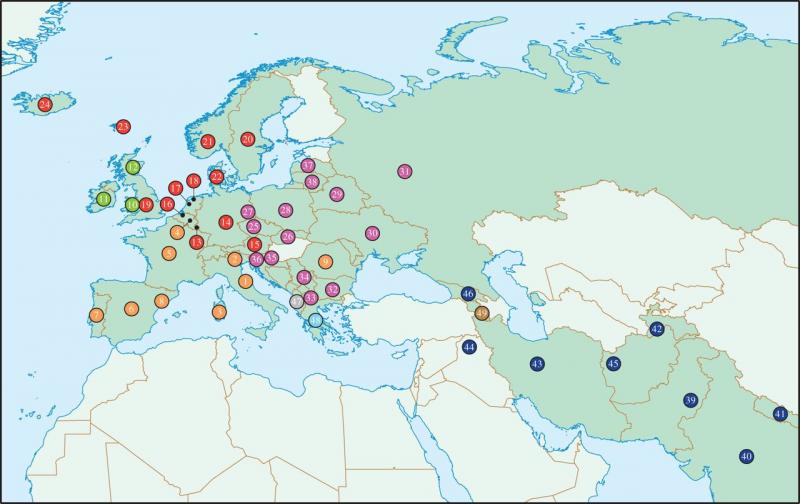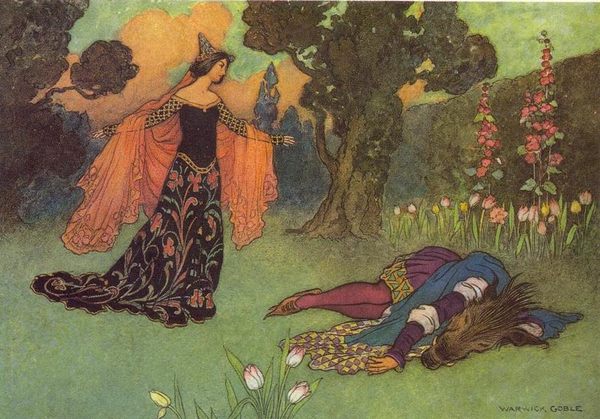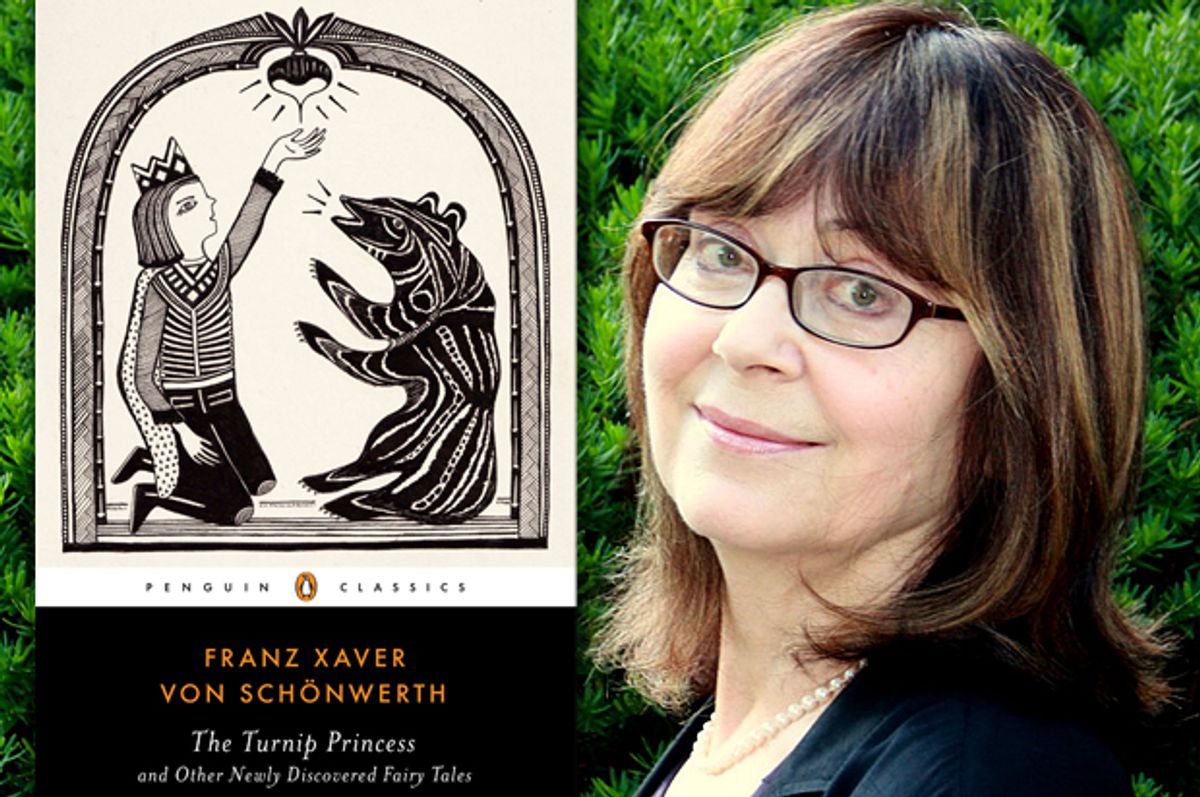On the Origin of Stories by means of Cultural Selection, or the Preservation of Favoured Tales in the Struggle for Retelling.“Oh, grandmother, what big shoulders you have!”
“The better to carry firewood with, my child!”
“Oh, grandmother, what a big nose you have!”
“The better to take my tobacco with, my child!”
“Oh, grandmother, what a big mouth you have!”
“The better to eat you with, my child!” By this time, the little girl new something was certainly not right. Quickly, she hatched a plan. “Oh, grandmother, I have to do it outside!”
“Do it in the bed, my child!”
“Oh no, grandmother, I really have to do it outside!”
“All right, but mind that you come back quick. I’ll tie your ankle with a woollen thread so I’ll know just where you are.” With that, the bzou produced a sturdy woollen thread and secured it firmly round the little girl’s ankle.
Is the bzou a wolf or a man? The answer is a bit of both, for they constantly shift between the two forms. The word bzou would best be translated to English as “werewolf”. And most people are content to leave it at that. Classifying creatures is not an easy task, even when there’s no magic involved. That’s because creatures don’t always fit into the categories people make for them. There are always the in-between ones that get scientists confused — including the famous Duck-Billed Platypus. Should it be counted as a mammal, because only mammals have fur? Or as a reptile, because no mammals lay eggs? In the beginning, when New Zealand scientists sent a stuffed platypus sample to their colleagues in Europe, the Europeans thought it was a joke. (Werewolves are considered a joke even today).
As soon as she was out of the house, the little girl took out her sewing scissors and chopped off the thread from her ankle. Then she tied the loose end of the thread to a slender plum tree in her grandmother’s garden, and ran away as fast as her legs would carry her. The bzou was getting impatient. “What, have you finished yet, my child?” he cried. Hearing no response, he soon called again, “Are you watering the grass or feeding the trees?” Again, no answer came. Getting suspicious, the bzou leapt up and followed the thread. Finding the girl gone and a plum tree in its place, he have a howl of rage, turned his nose to the ground, and set off in hot pursuit.
Today, the platypus has its own mammal subcategory — the monotremes, a small set of mammals which lay eggs. Classification, however, is still a messy process. During the height of the dinosaur craze, when collectors would dynamite fossil sites to prevent their competitors from finding them, so many new species were being found that nobody knew where to group them. Different categories and subcategories were invented on-the-fly, and different people often ended up with different methods that hardly matched. Meanwhile, some groups like the Megalosaurus became a sort of “species dustbin”. If anyone found a new fossil that didn’t quite fit anywhere, they’d stuff it under Megalosaurus and be done with it. It wasn’t until a major cleanup drive later on that people sat down to properly decide what was a Megalosaurus and what was not. Today, classification is a bit easier, because people don’t just group similar-looking creatures together. Instead, they make groups depending on what evolved from what — a kind of family-tree of all the species in the world. That’s a useful technique, because species aren’t the only things that evolve.
Why is the English language so weird? Author Bill Bryson has a possible explanation. All languages go through periodic upheavals; times when everybody changes from one style to another. Spellings change, new words emerge, and everything is in flux until it finally settles down into a reconfigured, new-and-improved stable system. With English, however, something happened while the language was still unsettled: something that took hold of the unsettled language and permanently froze it in place. That singular event was the creation of the Dictionary. Samuel Johnson and his counterparts documented the current state of the language, with all its quirks, idiosyncrasies, and not-quite-settled points. And then, everyone started following the dictionary’s guidance, which mean the aforementioned loose ends never got settled.
One does not always think of stories as “evolving”. Sure, there is a period when an author or scriptwriter is still working out the plot, building out characters, or staring bemusedly at an empty page. But once a story’s done and published, it’s fixed forever — isn’t it? Well, not always. “Fixed forever” is what happens to a written story. But in an oral tradition, things are quite different. When a storyteller tells a story for the first time, that’s only the beginning. The story will be told and retold countless times, being remembered, misremembered, and dis-remembered on the way. Storytellers themselves tweak and change their tales, depending on what the audience likes and what new ideas have popped up since last time. You may think this an inefficient process, because the “original” story gets distorted and lost. Far from it! An oral story is alive; it is constantly adapting to the times, picking up new information as it is told along and discarding that which is useless. In 18th-century Europe, Little Red Riding Hood was a cautionary tale about predators and prey. Today, it’s more about innocence and seduction. Just as humans change their skin-cells every nine years, yet remain the same people, so stories change and adapt while keeping their essence intact. An oral story is a developing story; written stories are like dead fossils in comparison.
One must not, however, underestimate the fossil. Fossils can be very useful, not just for learning what lived in the past, but also for deciding how to classify creatures today. People don’t have to depend on a vague sense of how similar they look; they can trace back who came from the same ancestor. Bats and pterosaurs may look similar, but their ancestors — and therefore their groups — are very different. The science of figuring out family-trees of fossils is known as “phylogenetics”, where phylo means “origin” or “born”. Nowadays, with modern technology, scientists can even extract DNA from fossils sometimes — an even more precise way of tracking family. Phylogenetics doesn’t solve all problems, though. Remember the platypus? It’s ancestors, like other mammals, evolved from a group of reptiles called ‘therapsids’. And some people wonder if the platypus should be considered a reptile after all; a modern-day therapsid with fur.
Even folktales leave behind traces. Fragments and interpretations fossilised into printed word, remaining unchanged for centuries. Some of these are written down for education or entertainment; others are gathered by folklorists — professional researchers who travel the world collecting stories in much the way a naturalist collects species. But how do you sort through these stories? How do you decide what goes where? That’s what Antti Aarne, a Finnish folklorist, decided to tackle in the early 20th century. He went through all the Scandinavian folklore collections he could find, and sorted them into named and numbered categories: starting from “Animal Tales” at numbers one through 299, and going on from there. This later evolved into the ATU Index, when it was translated to English by Stith Thompson in the 1920s and revised again by Hans-Jörg Uther in the early 2000s. Many other people also pitched in, but those are the three the ATU index is named after — Aarne, Thompson and Uther. The ATU Fable Index provides a standard way for folklorists to talk about stories. But that’s not all. Now that people have the stories in one place, they can analyse and trace their history, using the same computer algorithms that power modern phylogenetics.
When people speak of the “original” version of a folktale, they often mean a specific written version, such as the Cinderella of the Brothers Grimm. (The ugly sisters hack off part of their foot in a desperate attempt to fit it into the shoe, prompting Roald Dahl to describe the Grimms’ stories as “grim indeed”). However, the Grimms themselves were collectors too. And they did quite a bit of editing to make their story suit the times. A recently found compilation by another folklorist, Franz Xaver von Schönwerth, holds tales brimming with grimmness. Cinderella’s father doesn’t remarry, instead wanting Cinderella herself to replace his wife. Rapunzel gets pregnant and gives herself away to her captor (“Tell me, Mother Gothel, why are my clothes becoming too tight?”). Prince Goldilocks’ father sends him out into the woods to die, feeling threatened by his powerful strength. In 2016, anthropologist Jamshid Tehrani did a phylogenetic analysis of the ATU index. He saw what language each version of a story was recorded in, and, using the family tree of languages, tried to pinpoint when the “original” of each story arose. The result? Some stories seem to be as old as 6000 years, or three times as old as Christ!
But Tehrani’s speciality is phylogenetics — or rather, phylogenetics for folklore. One study of Little Red Riding Hood throws up interesting tidbits, and also highlights the limits of the ATU Index. Little Red Riding Hood is classified as ATU 333, and includes all the tales involving a little human getting accosted by a beast. Not to be confused with ATU 123, the “Wolf and the Seven Little Kids” family where a beast tricks tiny other animals to let them into the house. That’s fine for European folktales, but other stories blur the boundaries. Southeast Asia’s “Tiger Grandmother” story causes a dilemma — should it be considered ATU 333, because the protagonists are human and not an animal? Or should it be ATU 123 because they’re left home by their mother? Then again, should it be ATU 333 because they meet the visitor on the way? Or ATU 123 because there are multiple victims rather than one? Tehrani gave the stories different parameters like “number of protagonists” and “human or animal”, making a kind of “DNA for stories”. He then run statistical algorithms on them, to figure out which should be grouped where. One set clustered around ATU 333 and another near ATU 123, but the “Tiger Grandmother” in particular had a separate branch of its own. These examples show how the ATU Index still isn’t perfect — and perhaps will never be. Of course, folklorists are working on it. They’re broadening their searches, reaching into remoter areas, and collecting even more data than before. Things are set to get better. And if you’re not a folklorist, maybe there’s still a way you can help: by telling more stories.
The Author's Notepad Badri Sunderarajan
This week, instead of book recommendations, we're doing something a bit different: author notes! While writing this article, Badri came across many interesting pieces on related topics, the best of which are listed for you below: The story that sparked 'Developing Story'On Red Riding HoodOn the age of folktalesOn the ATU Fable IndexOn the origins of some folktales
💡 Feeling inspired? Snipette has some awesome authors—and you could be one of them! Whether you're a researcher looking to share your work or a student wanting to write something that isn't homework, our editors have you covered. Join our Writers' Programme for a guided experience, or just submit straight away. |
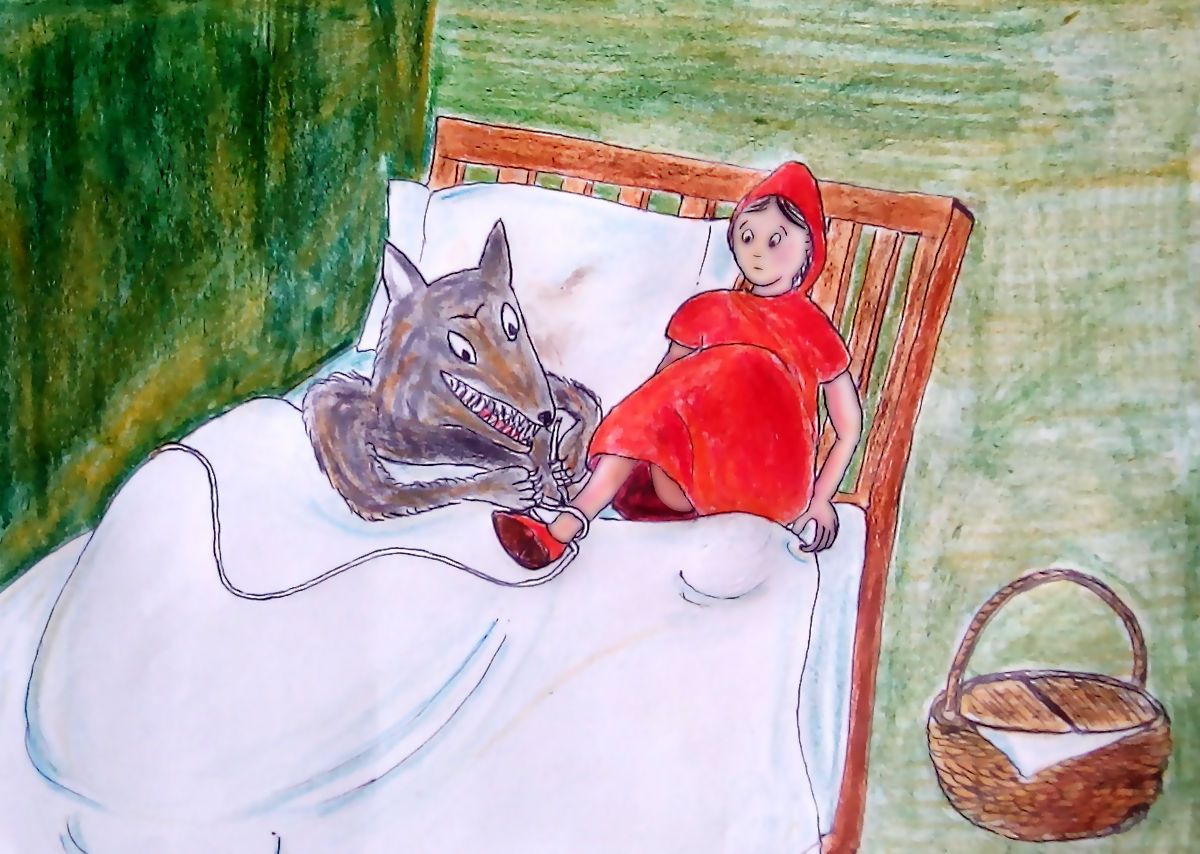
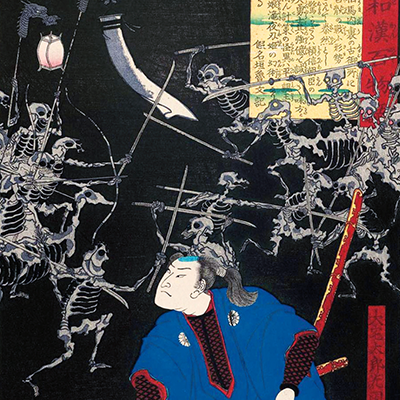


:quality(75)/curiosity-data.s3.amazonaws.com/images/content/thumbnail/standard/5f241e4c-d3a7-472c-91d0-ff6908cf9ad0.png)
